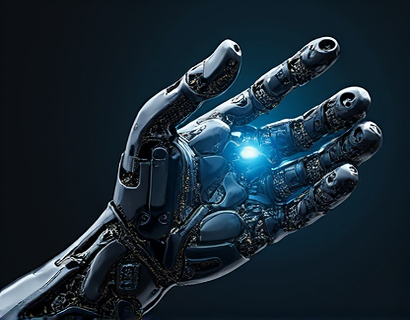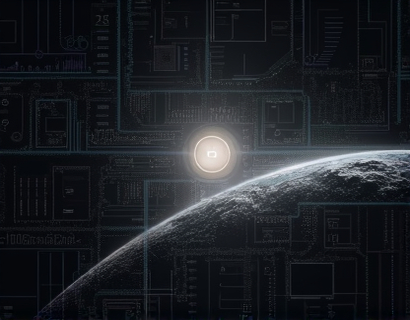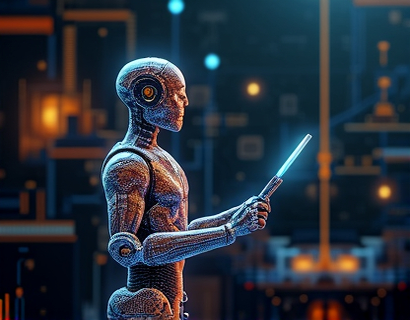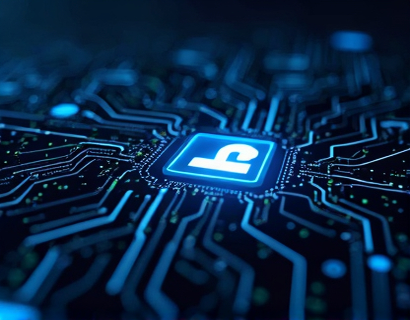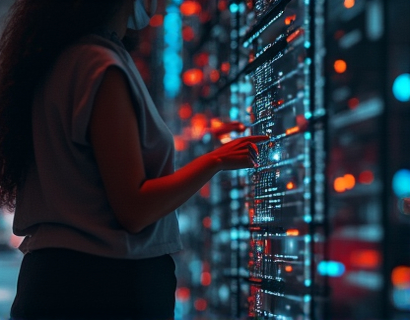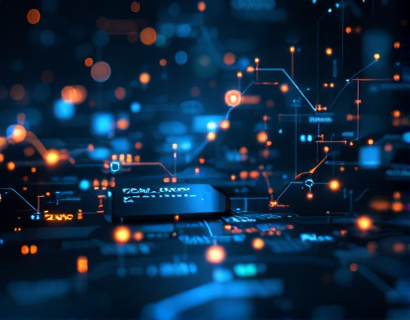Harnessing the Power of Crypto and AI: A New Era for Digital Ecosystems
The convergence of blockchain technology and artificial intelligence (AI) is ushering in a new era of innovation in the digital landscape. This synergy is not just a technological curiosity but a transformative force that is set to redefine how we interact with digital services and applications. For tech innovators and early adopters, understanding the potential of this integration is crucial for staying ahead in a rapidly evolving market. This article explores the intricate relationship between crypto and AI, highlighting how their combined power can drive substantial growth and enhance user experiences across various digital platforms.
Understanding Blockchain and AI
Before delving into the synergy between blockchain and AI, it's essential to grasp the fundamentals of each technology. Blockchain, at its core, is a decentralized ledger technology that ensures transparency, security, and immutability in transactions. It operates on a network of nodes, each maintaining a copy of the ledger, which is updated through consensus mechanisms. This decentralized nature eliminates the need for intermediaries, reducing costs and increasing trust.
Artificial intelligence, on the other hand, encompasses a range of technologies designed to simulate human intelligence in machines. These include machine learning, natural language processing, and computer vision. AI systems can analyze vast amounts of data, identify patterns, and make decisions with minimal human intervention. The combination of these two technologies creates a powerful toolset for developing next-generation digital solutions.
The Synergy of Blockchain and AI
The integration of blockchain and AI is particularly potent because it leverages the strengths of both technologies. Blockchain provides a secure and transparent environment for data storage and transaction processing, while AI enhances the functionality and efficiency of these processes. Here are some key areas where their synergy is most impactful:
- Data Security and Privacy: Blockchain's inherent security features ensure that data used by AI systems is tamper-proof and private. This is crucial for applications in finance, healthcare, and other sensitive sectors where data integrity is paramount.
- Decentralized AI: Traditional AI models rely on centralized data repositories, which can be vulnerable to breaches and censorship. Decentralized AI, powered by blockchain, allows for distributed data storage and processing, enhancing resilience and reducing single points of failure.
- Smart Contracts and Automation: Smart contracts on blockchain can automate complex workflows and execute transactions based on predefined conditions. When combined with AI, these contracts can adapt and optimize their behavior based on real-time data, leading to more efficient and intelligent systems.
- Enhanced Decision-Making: AI algorithms can analyze data from blockchain networks to provide insights and predictions. This can be particularly useful in areas like supply chain management, where real-time tracking and analysis can optimize operations and reduce costs.
Transforming Digital Interactions
The combined power of blockchain and AI is revolutionizing digital interactions in several ways. One of the most significant impacts is on user experience and engagement. Here’s how:
Firstly, the integration of these technologies can lead to more personalized and secure user experiences. AI-driven analytics can process data from blockchain sources to create detailed user profiles, enabling highly tailored content and services. At the same time, blockchain ensures that user data is securely stored and managed, enhancing trust and privacy.
Secondly, decentralized applications (dApps) built on blockchain platforms can leverage AI to offer intelligent and adaptive functionalities. For instance, AI-powered chatbots on dApps can provide seamless customer support, handling queries and transactions with minimal human intervention. This not only improves efficiency but also reduces operational costs.
Thirdly, the use of blockchain and AI can enhance trust and transparency in digital interactions. Blockchain's immutable ledger ensures that all transactions and interactions are recorded and verifiable, while AI can detect and prevent fraudulent activities in real-time. This dual approach creates a more secure and trustworthy digital environment, encouraging broader adoption of decentralized technologies.
Driving Substantial Growth
The synergy between blockchain and AI is not just about enhancing user experiences; it's also a powerful driver of growth for businesses and ecosystems. Here are some strategic ways this integration can lead to substantial growth:
First, the development of decentralized marketplaces is a prime example. These platforms use blockchain to facilitate peer-to-peer transactions, eliminating intermediaries and reducing fees. AI can optimize these marketplaces by analyzing market trends, predicting demand, and matching supply with high precision. This results in more efficient markets and higher profit margins for participants.
Second, the financial sector stands to benefit significantly. Decentralized finance (DeFi) platforms leverage blockchain for secure and transparent financial transactions, while AI can enhance risk management, fraud detection, and algorithmic trading. This combination can lead to more robust and innovative financial products, attracting a broader range of users and investors.
Third, the Internet of Things (IoT) ecosystem can be transformed through the integration of blockchain and AI. IoT devices generate vast amounts of data, which can be securely stored on blockchain and analyzed using AI to derive actionable insights. This can optimize device performance, predict maintenance needs, and enhance overall system efficiency, leading to new business opportunities and revenue streams.
Enhancing Online Presence and Connectivity
For tech innovators and early adopters, the integration of blockchain and AI offers unprecedented opportunities to enhance their online presence and connectivity. Here’s how:
First, building a decentralized identity system using blockchain can provide users with greater control over their digital identities. AI can manage and secure these identities, ensuring they are robust and compliant with regulatory standards. This not only enhances user trust but also opens up new possibilities for cross-platform interactions and data sharing.
Second, leveraging blockchain and AI for content creation and distribution can revolutionize the media and entertainment industries. AI can generate and curate content based on user preferences, while blockchain ensures that creators are fairly compensated and that content is securely distributed. This creates a more sustainable and engaging digital ecosystem for all stakeholders.
Third, the use of blockchain-based governance models, combined with AI-driven analytics, can enhance community management and decision-making processes. This approach ensures that all voices are heard and that decisions are data-driven, leading to more cohesive and resilient communities.
Challenges and Considerations
While the potential of blockchain and AI is immense, there are several challenges and considerations that must be addressed:
First, scalability remains a significant issue for blockchain technology. As the number of transactions increases, blockchain networks can become slow and expensive. Innovations in consensus mechanisms and layer 2 solutions are essential to overcome this hurdle.
Second, the regulatory landscape for blockchain and AI is still evolving. Ensuring compliance with existing laws and anticipating future regulations is crucial for businesses operating in this space. Collaboration with regulatory bodies and adherence to best practices can help navigate this complex environment.
Third, the technical expertise required to develop and maintain blockchain and AI systems is specialized and in high demand. Investing in training and talent acquisition is vital for organizations looking to harness these technologies effectively.
Conclusion
The integration of blockchain and AI represents a paradigm shift in the digital landscape, offering transformative opportunities for tech innovators and early adopters. By leveraging the strengths of both technologies, businesses can enhance user experiences, drive substantial growth, and establish a strong online presence. As the tech world continues to evolve, those who embrace this synergy will be well-positioned to lead the charge in the next generation of digital ecosystems.




